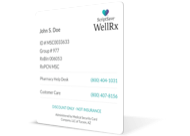Copyright 2024
Medical Security Card Company, LLC
All Rights Reserved
WellRx will never sell your personal information. Period. By signing up I agree to WellRx's terms of use and privacy policy.
by Derek Matlock, PharmD Candidate 2017
Washington State University
May 09, 2018
Nearly one-quarter of all U.S. deaths in 2016 were linked to heart disease, which refers to conditions involved in narrowing or blocking blood vessels, potentially leading to things like heart attack, chest pain, or stroke.
Despite the continued and steady decline of deaths due to strokes, they continue account for 1 of every 20 deaths in the US. The decline of deaths due to strokes can be attributed to early identification of strokes, primary prevention, and secondary prevention.

As a patient or caregiver, is it important to be able to identify the signs of a stroke as early as possible, as it can influence a positive outcome in patients at risk. The FAST acronym can be a simple and easy tool for identifying a stroke.
Face: Does the face look uneven? Ask them to smile.
Arm: Does one arm hang down? Ask them to raise both arms.
Speech: Does their speech sound strange? Ask them to repeat a phrase.
Time: Every second brain cells die. If any of these signs are observed, call 911.
Primary prevention refers to the management or treatment of patients who have no prior history of stroke. It involves addressing modifiable risk factors a patient may have, which may include: high blood pressure, diabetes, dyslipidemia, atrial fibrillation, sickle cell disease, post-menopausal hormone replacement therapy, oral contraceptives, diet, weight and body fat.
Additionally, your doctor or pharmacist may calculate your Atherosclerotic Cardiovascular Disease (ASCVD) risk score, which estimates a 10-year risk of heart attack or stroke and helps determine the appropriateness of using medications to lower your risk. Some medications that may be added include: statins for cholesterol; thiazide diuretics, ACE inhibitors (ACEIs)/angiotensin II receptor blockers (ARBs), or calcium-channel blockers (CCBs) for blood pressure; and aspirin to help prevent blood clot formation.
Secondary prevention refers to the treatment of patients who have already had a stroke or “mini-stroke.” Interventions commonly prescribed for secondary prevention are summarized using the following ABCDE acronym:
Antiplatelets and Anticoagulants: Antiplatelet medications, like aspirin, clopidogrel, and dipyridamole, can prevent formation of clots. Anticoagulants like warfarin, apixaban, rivaroxaban, and dabigatran can also reduce the ability for the blood to clot and thus lower stroke risk.
Blood pressure-lowering medications: Thiazide diuretics, ACEIs/ARBs, and CCBs help patients control the number one risk factor for a recurrent stroke, high blood pressure.
Cessation of cigarette smoking and Cholesterol-lowering medications: Quitting smoking can significantly lower the risk of strokes, while cholesterol-lowering medications, like statins (e.g., simvastatin, rosuvastatin, atorvastatin), have been shown to lower bad cholesterol as well as decrease the risk of recurrent stroke and mortality.
Diet: In addition to helping weight loss, following a heart healthy diet, or a low-sodium “DASH diet”, may help lower cholesterol, triglycerides, or blood pressure, which decreases your risk of a stroke.
Exercise: For patients capable of exercising, it is recommended to exercise moderately to vigorously for 20 to 40 minutes 3-4 times per week. Be sure to stay within your limits. Good exercises can include walking or riding an exercise bike. Some community centers and gyms even host classes for older patients with physical limitations.
Strokes continue to account for a significant amount of deaths in the United States. Your doctor or pharmacist may recommend lifestyle modifications and medications to help lower the possibility of experiencing a new or recurrent stroke. If you are being prescribed medications to lower your stroke risk, be sure to provide your doctor with a thorough medical history and medication list, as some conditions and medications may guide the recommendations your doctor makes. Your pharmacist can also be a valuable resource to any questions you may have.
References:

For your convenience, use the ScriptSave® WellRx mobile app. Now savings are well in hand, right at the pharmacy counter. Save on your family's prescription medicines.
Learn More
Your choice. Get a ScriptSave WellRx Savings Card. Or Download the free mobile app from the App Store or Google Play Store
Get A Card
ScriptSave WellRx Grocery Guidance leverages leading-edge nutritional data science to help you know which food products on your grocery store shelf are truly good for YOU.
Healthy Foods For YouTags:

June 09, 2022

April 26, 2022
You need to log into the site to use this feature
This feature requires registration. Sign up or log in to your free WellRx account to gain access to this and other tools to help make managing your medications and wellness easier.
Benefits Include:
 Store & manage your medication list
Store & manage your medication list
 Medication pricing updates
Medication pricing updates
 Medication information
Medication information
 Pill & refill reminders
Pill & refill reminders
 Medication journal & mood log
Medication journal & mood log
This feature requires registration. Sign up or log in to your free WellRx account to gain access to this and other tools to help make managing your medications and wellness easier.
Benefits Include:
 Store & manage your medication list
Store & manage your medication list
 Medication pricing updates
Medication pricing updates
 Medication information
Medication information
 Pill & refill reminders
Pill & refill reminders
 Medication journal & mood log
Medication journal & mood log
You will be redirected to your program in 5 seconds.
Our Terms and Conditions and Privacy Policy have recently been updated.
By declining you will be logged out of your account